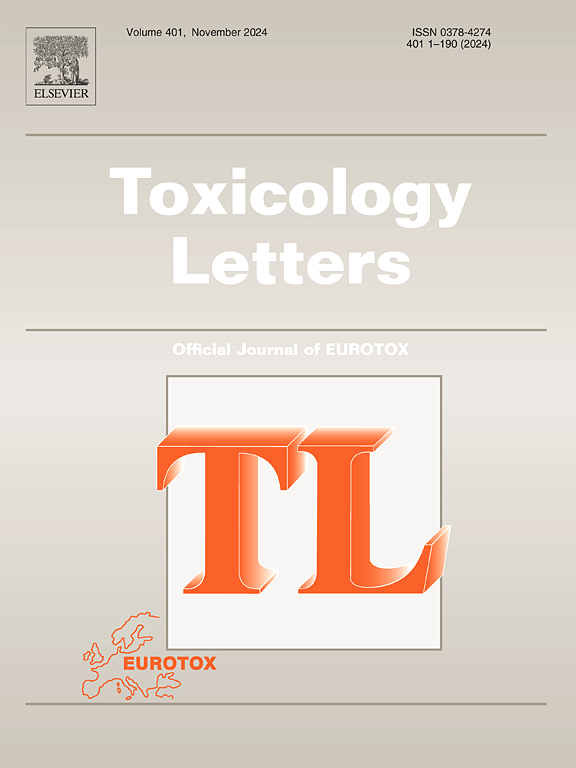Occupational exposure to amorphous silica nanoparticles alters lung function and metabolomic features
IF 2.9
3区 医学
Q2 TOXICOLOGY
引用次数: 0
Abstract
Amorphous silica nanoparticles (SiNPs) are widely produced and used nanomaterials. Although studies have extensively documented SiNPs-induced pulmonary injuries in animal models, the adverse effects on humans remain unclear due to a lack of epidemiological research. In this population-based study, we investigated the effects of occupational exposure to SiNPs on pulmonary function and serum metabolites and explored correlations between these outcomes. We included 15 workers exposed to SiNPs and 45 healthy adults. Chest X-radiography revealed abnormalities such as disordered lung markings and increased lung markings in exposed workers. Pulmonary function parameters, including forced vital capacity (FVC), forced expiratory volume at 1 s (FEV1) and forced expiratory flow at 25–75 % (FEF25 %–75 %) were significantly lower in the exposed group compared with controls. We used untargeted high-resolution metabolomics to analyze serum metabolites and identified 15 significantly altered metabolites, primarily categorized as lipids and amino acids. Metabolic pathway analysis suggested that SiNPs exposure may disrupt tryptophan metabolism, phenylalanine metabolism, and sphingolipid metabolism. We used Spearman correlation analysis to evaluate relationships between metabolites and pulmonary function. Six metabolites, particularly the environmental pollutants TEMPO and PFOS, showed significant associations with lung function parameters. Therefore, SiNPs may alter the absorption and metabolism of other environmental pollutants. Overall, occupational exposure to SiNPs may impair lung function and disrupt serum metabolite profiles.
职业性暴露于无定形二氧化硅纳米颗粒会改变肺功能和代谢组学特征
非晶二氧化硅纳米颗粒是一种广泛生产和应用的纳米材料。尽管研究已经在动物模型中广泛记录了sinps引起的肺损伤,但由于缺乏流行病学研究,对人类的不良影响尚不清楚。在这项基于人群的研究中,我们调查了职业暴露于SiNPs对肺功能和血清代谢物的影响,并探讨了这些结果之间的相关性。我们纳入了15名暴露于sinp的工人和45名健康成年人。胸部x光片显示异常,如肺标记紊乱和肺标记增加暴露的工人。暴露组肺功能参数,包括用力肺活量(FVC)、用力呼气量1 s (FEV1)和用力呼气流量25-75 % (FEF25 % -75 %)均显著低于对照组。我们使用非靶向高分辨率代谢组学分析血清代谢物,并鉴定出15种显著改变的代谢物,主要分类为脂质和氨基酸。代谢途径分析表明,SiNPs暴露可能破坏色氨酸代谢、苯丙氨酸代谢和鞘脂代谢。我们使用Spearman相关分析来评估代谢物与肺功能之间的关系。六种代谢物,特别是环境污染物TEMPO和PFOS,与肺功能参数有显著相关性。因此,sinp可能改变其他环境污染物的吸收和代谢。总的来说,职业暴露于SiNPs可能损害肺功能并破坏血清代谢物谱。
本文章由计算机程序翻译,如有差异,请以英文原文为准。
求助全文
约1分钟内获得全文
求助全文
来源期刊

Toxicology letters
医学-毒理学
CiteScore
7.10
自引率
2.90%
发文量
897
审稿时长
33 days
期刊介绍:
An international journal for the rapid publication of novel reports on a range of aspects of toxicology, especially mechanisms of toxicity.
 求助内容:
求助内容: 应助结果提醒方式:
应助结果提醒方式:


